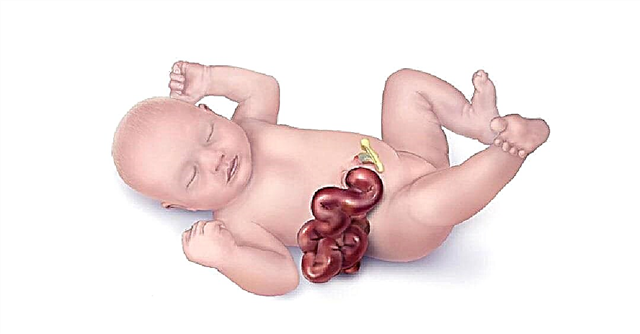Voice is the main communication tool that adults and children need every day. Even if the baby does not yet know how to speak, he gives a voice in the form of crying, which is his means of communication. When a baby has a hoarse voice, it immediately becomes noticeable to parents. In what cases is concern for a baby justified?

The child has a hoarse voice
Causes of a hoarse voice
Hoarseness occurs due to abnormalities in the larynx, the area of the vocal folds (containing the vocal cord and vocal muscle), or problems with the ligaments themselves.
Important! Since the vibrations in the larynx, necessary for the formation of the voice, require the correct functioning of the entire apparatus, irritation, mechanical overload, nerve damage and edema in this area are immediately noticeable due to the resulting hoarseness.
The main reasons for a hoarse voice in babies:
- laryngitis;
- pharyngitis;
- viral and bacterial infection (measles, rubella, chickenpox, scarlet fever);
- a cold with a runny nose;
- prolonged tension of the vocal cords, which occurs with frequent and strong crying with a cry;
- allergy;
- gastroesophageal reflux disease;
- the presence of a foreign body in the respiratory tract;
- respiratory tract irritation due to polluted or too dry air;
- defects in the structure of the larynx.
Hoarse voice with prolonged crying
If a 1 month old baby is hoarse, a common cause is prolonged intense crying, caused, for example, by colic.
There is a free space between the vocal cords - the glottis. When they tense and vibrate, a tone of voice is created.
In children who begin to cry and scream a lot, the vocal cords thicken, small outgrowths - nodules - form on them. These benign changes prevent the ligaments from vibrating and lead to loss of voice. Persistent hoarseness that persists over an extended period of time may be a sign of such changes.

The baby cries a lot
Important! With prolonged hoarseness, you should consult a pediatrician or otolaryngologist who will prescribe appropriate treatment.
In these cases, it is difficult to treat infants, since therapy involves stopping the load on the vocal cords (crying), which is impossible to imagine in newborns.
Hoarseness with laryngitis
Laryngitis in children is an inflammation of the larynx (its localization is in the upper part of the trachea, below the root of the tongue), caused by various reasons, including viral infections. Since the respiratory system can become infected with various types of viruses (influenza viruses, adenoviruses, paramyxoviruses, etc.), laryngitis can recur several times, especially in late autumn and early winter, and manifest itself with a hoarse voice and cough.

Laryngitis in children
In some cases, laryngitis in children may be due to allergies to pollen, medicine, or another substance. Then the disorder appears every time the child comes into contact with the allergen.
A separate type of laryngitis in young children is stenosing laryngitis, which is also called "false croup". It affects babies under the age of 4-5 years and is very common in children from one to three years old. As the child grows, the seizures disappear because the cartilage in the larynx becomes longer and more elastic and does not clog due to the swelling caused by the inflammation.
False croup occurs against the background of signs of a common cold (weakness, runny nose, mild cough, fever) and is manifested by the following symptoms:
- Severe attack of barking cough, accompanied by wheezing and whistling;
- The newborn has a hoarse voice, he suffocates, when inhaling, he makes loud whistling sounds;
- The baby begins to salivate, and difficulty swallowing.
Important! If the child has previously had an attack of "false croup", then the baby is hoarse again, you should immediately consult a doctor in order to relieve laryngospasm in time.
Scarlet fever, measles, chickenpox
A hoarse voice in a baby can appear as a result of infectious diseases that often affect young children:
- Scarlet fever is a dangerous disease caused by the bacteria Streptococcus pyogenes. It is characterized by high temperature (up to 39-40 ° C), the formation of plaque on the tonsils, redness of the throat. A little later, a rash appears on the body (reddish plaques with a rough surface), especially intense rashes in the area of folds, armpits and groin. The baby may wheeze for a while and after recovering from the disease;
- Measles. It starts out like a common ARVI. The child's nasal mucosa swells, coughs and fever appear. Then the parents notice that the baby's voice is hoarse, while the stomach may hurt, the mucous membrane of the eyes may become inflamed. On the fourth day, a red rash appears on the forehead and behind the ears, which spreads to the whole body;

Measles in a baby
- Chicken pox. With chickenpox, rashes can affect the oral cavity: palate, tongue, back wall of the throat. Because of this, the pharyngeal mucosa swells and becomes inflamed, although there is no plaque on the tonsils. In addition to other signs of the disease, the child often has a sore throat, wheezing and creaking voice. Hoarseness sometimes persists after recovery.
How to find out that a baby has ARVI
Respiratory diseases can cause a hoarse voice in babies. They can be recognized by their obvious and accompanying signs:
- swelling of the nasal mucosa;
- cough;
- temperature;
- refusal to eat and crying while eating, as the baby may have a sore throat;
- sleep disorders;
- frequent anxiety, moodiness, weakness.
When urgent help is needed
If a newborn has a sore throat, in some cases, immediate medical attention will be required:
- With a sudden narrowing of the larynx, which can occur as a result of an allergic reaction. This condition is called Quincke's edema, it can be recognized by shortness of breath, barking cough, facial edema, blue discoloration and pallor of the skin, loss of consciousness;
- When a foreign object or pieces of food gets into the respiratory tract. At the same time, cyanosis of the skin is observed, a strong cough, the baby is suffocating;
- Laryngospasm. If a false croup develops during viral infections, it is necessary to immediately call an ambulance, especially when the newborn is suddenly hoarse, his lips turn blue, the baby cannot keep his head, suffers from a prolonged attack of barking cough, he has wheezing.
First aid
In addition to calling the doctor, parents should know what to do if the baby is hoarse and develops anxiety symptoms.
With laryngospasm, it helps if the baby breathes moist air. It is recommended to use an industrial humidifier, if not available, then you can take the child to the bathroom, close the door tightly and open the hot water tap. If the baby can drink, it is recommended to give him warm water.

First aid for false croup
Important! It is forbidden to give your baby sweet juices or compotes, as well as chilled or too hot drinks, as it can irritate the larynx.
First aid for foreign objects entering the larynx
The ingestion of a foreign object into the respiratory tract is very dangerous for the child, because it can lead to a complete cessation of breathing and death. The first symptom is an attack of severe coughing, this is an attempt by the body to expel a foreign object. At the moment, there is no need to pound the baby on the back, as you can push the foreign body even further.
If the foreign object is not removed, and the baby's condition worsens, you need to:
- Turn the child upside down, holding the legs, and lightly tap on the back;

Help with foreign body entering the larynx
- Sit down, put the baby on his knee with his stomach, holding him with one hand in the area of the breast, fixing the legs with the armpit of the other hand. Hit the interscapular region with the palm of the same hand, directing the blows to the head.
If the child does not breathe after removing the object, it is necessary to start doing resuscitation measures.
Dangerous consequences of hoarseness
A visit to the doctor is mandatory if the infant is hoarse under 3 months of age. In no case should you underestimate the symptoms, especially if the baby has problems breathing and swallowing, excessive salivation or malaise lasts more than a week.
Hoarseness in a newborn threatens to stop breathing completely. Complications such as bronchial asthma, pleurisy and abscess in the lungs are likely.
Important! In the first 12 months of life, it is necessary to try to exclude the infection of the baby with bacterial and viral infections.
What to do to restore your voice
If the baby has lost or wheezing voice, Dr. Komarovsky advises to try to restore it to try not to put stress on the vocal cords. While not provoking a baby's cry is a difficult task, you can try to reduce it by providing good baby care. In any case, the restoration of the voice will last longer than that of an adult.
Preventive measures
As a preventive measure against the appearance of a hoarse voice, the following measures are recommended:
- The room air should not be too dry, it should be humidified;
- It is necessary to regularly carry out hardening procedures and do them correctly in order to prevent hypothermia of the baby;
- The baby should be as calm as possible, protected from stress;
- Timely vaccination is important;

Vaccination for babies
- Visits to the pediatrician should not be avoided;
- It is necessary in time to identify substances that cause allergic reactions in an infant and to prevent their contact with the baby.
Hoarseness is not uncommon for young children, especially with colds. Often it is not a serious problem and can be cured without consequences. However, if you experience alarming symptoms, you should see your doctor.



